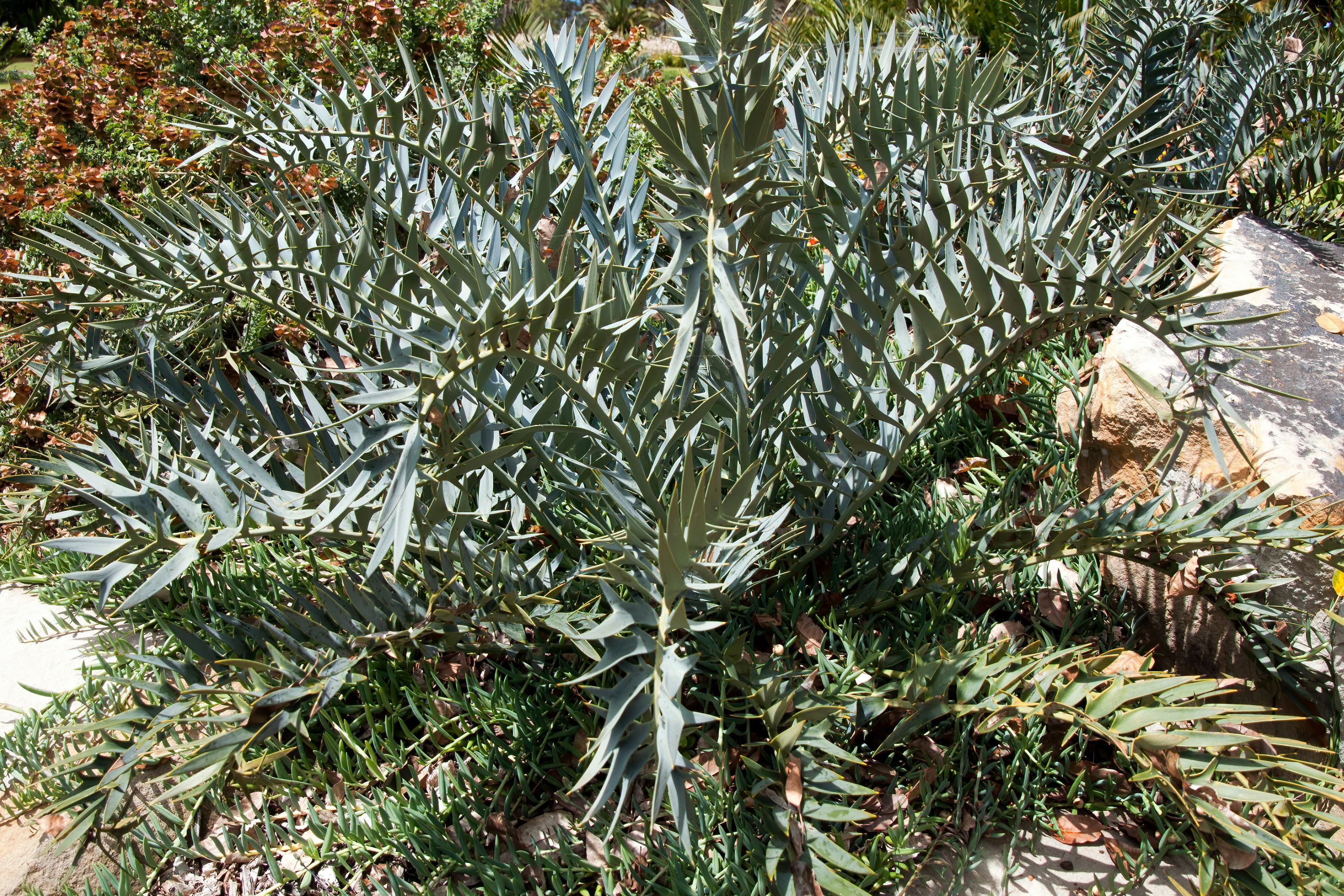Eastern cape blue cycad
(Encephalartos horridus)

Description
Encephalartos horridus, the Eastern Cape blue cycad, is a small, low-growing cycad up to 0.9 m (3.0 ft) high and 0.9 m (3.0 ft) wide. It is a native of Eastern Cape Province, South Africa, and found in arid shrublands, most commonly on ridges and slopes with shallow soils. The species is particularly known for its distinctly blue-gray leaves, although the degree of coloration can vary significantly. The species name horridus is Latin for 'bristly', after the plant's stiff, spiny leaflets. Mature plants have big stems of between 0.5–1 m (20–39 in) in length and 20–30 cm (8–12 in) in diameter with the majority of the stem growing below ground. Leaves are up to 1 m (39 in) long and often sharply recurved towards the tip, looking stiff and spiny. Younger leaves are a silvery-blue colour but turn green with age. Cones are usually brownish- or blackish-red and single with a dense layer of fine hair. Both male and female cones are produced. The female cone is egg-shaped and up to 40 cm (15.5 in) long and 20 cm (8 in) in diameter while the male cone is largely cylindrical narrowing towards the ends up to 40 cm (16 in) long and 12 cm (4.5 in) in diameter. Seeds are roughly triangular with three flattened surfaces. In the wild there is evidence of distinct variation within the species, including a possible 'dwarf' form found around Port Elizabeth.
Taxonomic tree:







